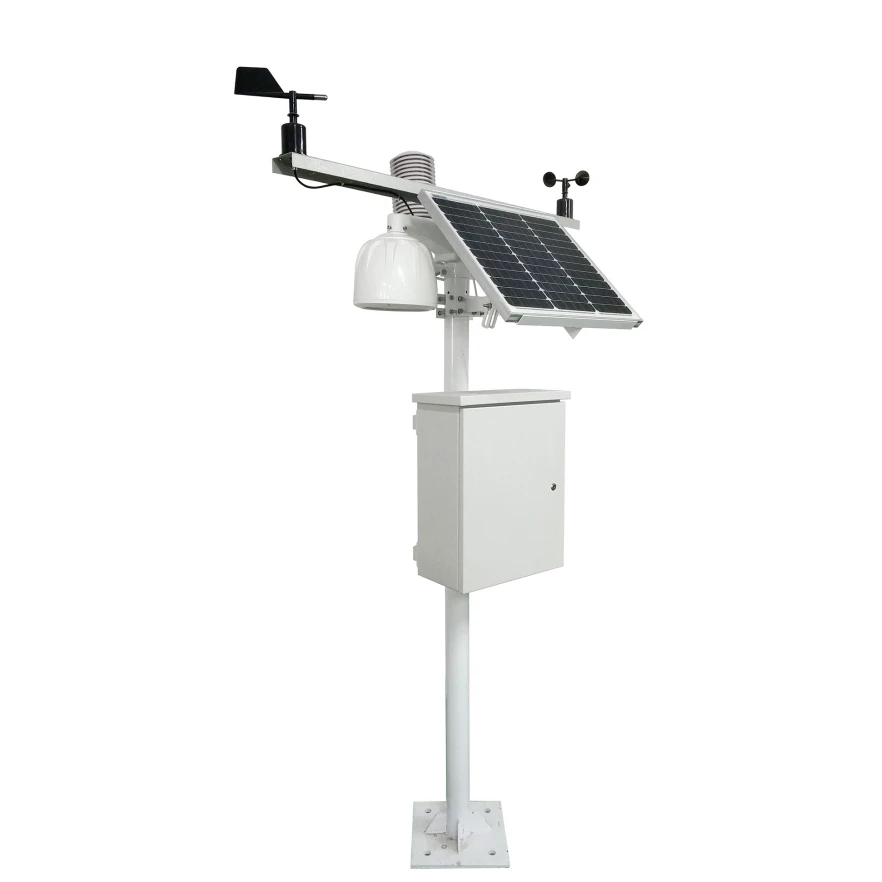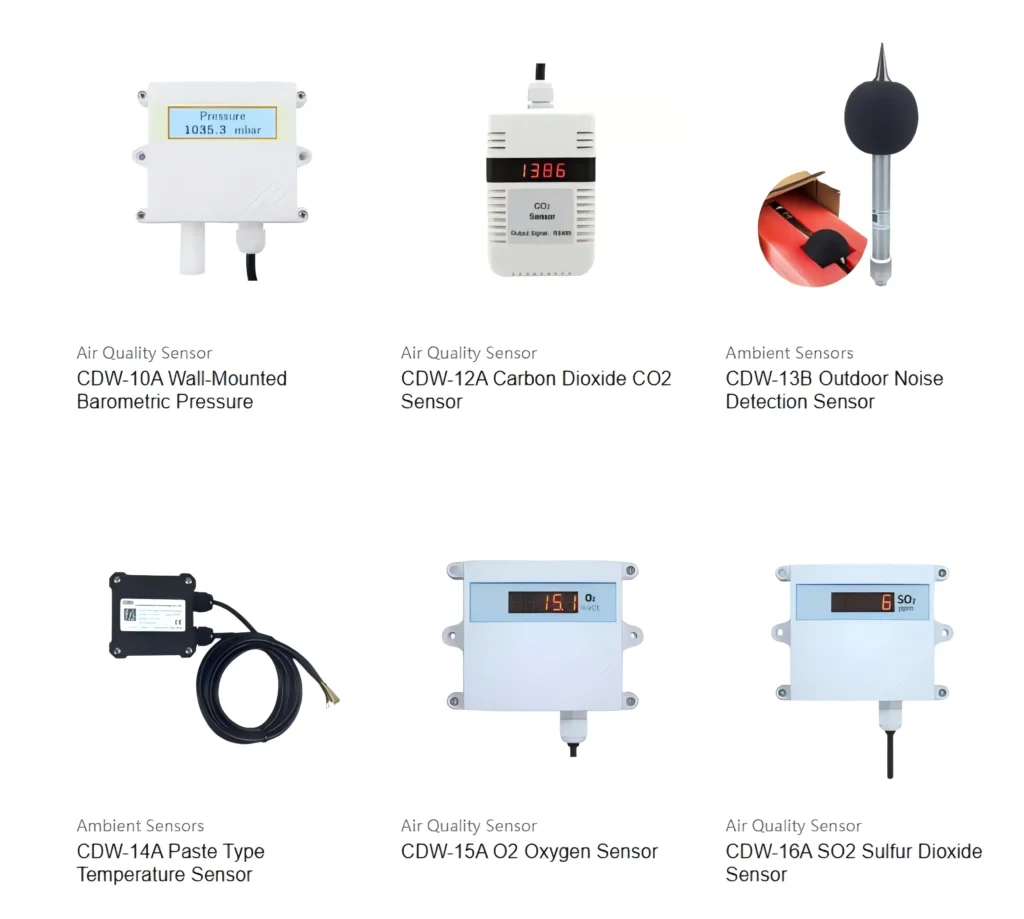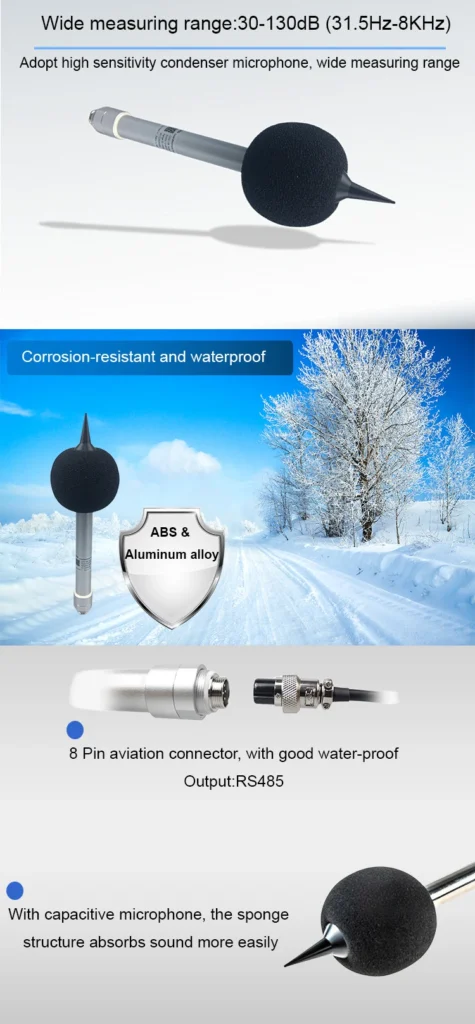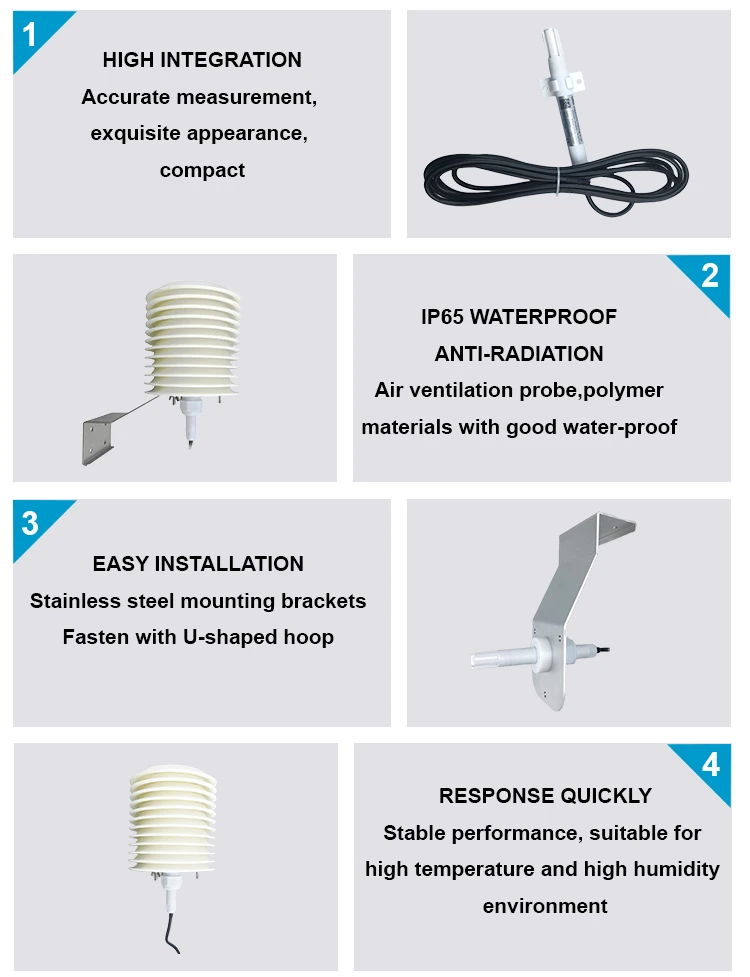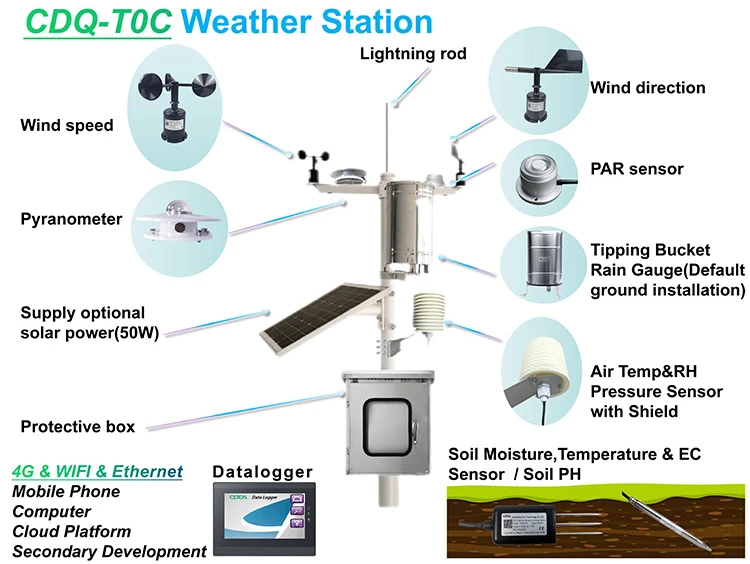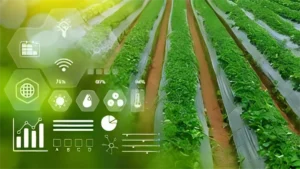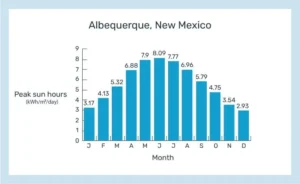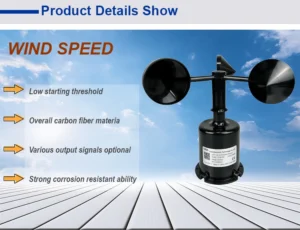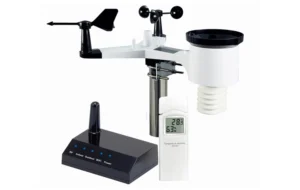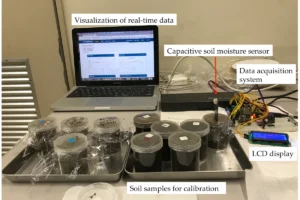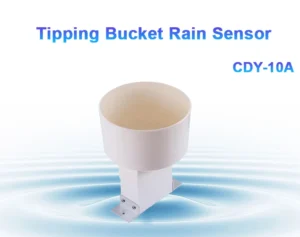environmental sensor
An environmental sensor is a device that measures and tracks conditions in the environment. These sensors can find many things.
They measure temperature, humidity, and pressure. Also track light, rainfall, and wind speed. They monitor wind direction too. They check noise levels and PM2.5 and PM10 levels as well.
These sensors have two main parts: a sensitive part and a part that converts signals. The sensitive part detects changes in the surroundings. The conversion element turns the output from the sensitive element into an electrical signal. You can measure and monitor this signal and write it down.
Environmental sensors are used in many fields. These fields include conservation, farming, weather forecasting, and industry. Sensors check air quality and pollution.
This helps protect the environment. This helps people understand the environment and find solutions.
In weather science, sensors check temperature, humidity, air pressure, wind speed, and direction. This data center helps with weather forecasts and studies on climate change.
In farming, sensors can check soil temperature, humidity, and light. This data helps farmers know when to plant crops and water them. This makes farming more efficient.
There are many types of ambient sensors. Each one can feel different factors in the environment. Common examples are temperature, humidity, pressure, light, rain, and wind speed sensors.
These devices use different ways to measure things. Some examples are the thermoelectric effect, resistive methods, capacitive methods, and photoelectric methods.
As technology keeps growing, ambient sensors are getting more accurate and reliable. New types of ambient sensors are also emerging. For example, there are wireless sensors, small sensors, smart sensors, and other similar devices.
You can use these new environmental sensors in many ways. They are great for real-time monitoring, remote monitoring, and smart monitor indoor.
What are the application scenarios of environmental sensors?
Many places use environmental sensors. Here are some of the main ways they are used:
Environmental monitoring:
Ambient sensors are used to watch the environment. They check air quality, temperature, humidity, and noise levels.
Air quality detectors can find harmful gases and particles in the air. They give information to help protect the environment.
Temperature and humidity sensors can measure the conditions both inside and outside. This data helps in weather forecasting, farming, industry, and more.
Noise sensors can measure how loud sounds are around us. They can also see how noise affects the human body.
Smart Home:
In smart homes, sensors can check temperature, humidity, light, and more. They can automatically change air conditioners, humidifiers, and curtains. This makes your home feel more comfortable.
Industrial control:
In industry, sensors help watch and control various factors in production. These factors are temperature, humidity, and pressure. Keeping an eye on these factors helps improve product quality and increases production efficiency.
Energy management:
Ambient sensors help control energy use. They check the temperature inside and outside. Also check humidity and other factors.
They can automatically change the air conditioning and heating systems. This leads to energy savings and lower emissions.
Transportation:
Environmental sensors can check conditions in cars and airports. They check things like temperature, humidity, and light. This helps keep passengers and cargo safe.
Agriculture:
In farming, sensors can check temperature, humidity, pH levels, and other soil factors. This helps farmers make better choices for planting. It can improve the yield and quality of crops.
Meteorological monitoring:
Ambient sensors can measure temperature, humidity, air pressure, wind speed, and wind direction. These sensors are important for collecting data. They help with weather forecasts and studies on climate change.
Environmental sensors offer numerous benefits for environmental monitoring:
Real-time: These sensors can quickly detect changes in the environment. This makes it much faster for us to monitor the environment.
Accuracy: Modern sensor technology is very precise and sensitive. It can detect small changes in the environment. This helps stop mistakes that can happen with manual checking.
Automation: Sensors can collect, send, and analyze data on their own. This lowers costs and makes tasks easier.
Remote monitoring: With the Internet of Things and cloud computing, sensors let us watch things from a distance and share data. This allows managers to view environmental conditions at any time and from any place.
Reliability: The sensor works well and lasts a long time. It can monitor the environment for a long time.
Flexibility: You can pick from many environmental sensors. This helps meet different needs for monitoring the environment in different situations.
Easy to integrate: the sensor works well with many data systems and software. This helps manage and analyze data together.
Affordable pricing: As technology gets better, producers reduce the costs of ambient sensors. This leads to more use and application.
In conclusion, sensors offer many benefits. They give real-time data, are accurate, and help with automation.
You can also watch things from far away, and they are dependable. Sensors are flexible and can easily integrate. They are also cheap for checking the environment.
These features make them widely used in many sectors. They help keep the environment safe and support growth that lasts.
